Most appliances in the Philippines are designed to work on an electrical supply of 230V at 60Hz. However, we all know that this supply of electrical power is consistently inconsistent in some areas. It may seem like a mild annoyance, but these power disturbances happen more frequently than you think and can compromise the operation of your appliance and can cause damage in the long run if no protection is present.
Luckily, there are ways to protect your appliances from the most common power disturbances that we experience. We need to identify these problems, how they affect an appliance, and the power protection devices one can purchase for their appliance.
What are the common power disturbances in the Philippines?
As with any essential resource, electricity becomes scarce when there is great demand but little supply. When these situations occur, power providers (e.g. Meralco, are forced to stretch their meager supply, and this can result in power disturbances across the grid. These disturbances will eventually reach the electrical sockets in our homes, and ultimately, the appliances that are plugged into them.
These power disturbances can cause equipment degradation and eventual failure of the appliance when left unchecked.
Note: in the Philippines, the standard voltage is 220V at a frequency of 60Hz. Keep this in mind throughout this discussion.
Power surge and overvoltage
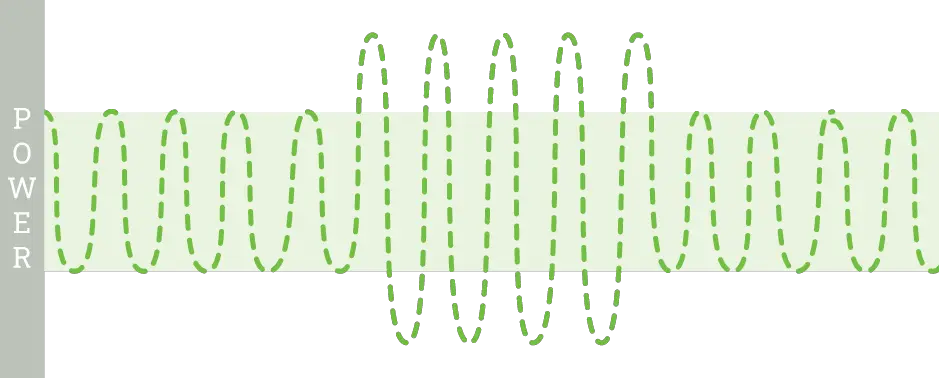
A power surge is a short-duration (3 nanoseconds) oversupply of voltage that increases the voltage significantly above the standard level. Meanwhile, an overvoltage event is basically a longer-duration power surge; instead of occurring in duration of nanoseconds, overvoltage events can last for minutes up to days.
Power surges can originate from the power provider, but it can also originate from the user’s building as well. Power surges happen for various reasons, the most common being:
- Lightning strikes
- Electrical overload
- Faulty wiring
- Power outage
- High-wattage appliance turning on
Meanwhile, overvoltage events happen mostly on the side of the power distributor. It typically happens when there is an extended oversupply of power from the power provider, or when an entity (like factories) that uses a large load of electricity suddenly turn off all of their machinery for some reason.
How power surges and overvoltage events can damage an appliance
Power surges happen more often than you think. Most are just small spikes that we barely notice, and luckily our appliances are equipped to deal with these.
However the incremental damage caused by frequently occurring surges can reduce the lifespan of your appliance and affect its performance negatively if it is not equipped with a power protection device.
If the surge is high enough, it can cause an arcing of electrical current within your appliance. This arcing electricity will produce heat that can cause your appliance to overheat. Not only will it destroy circuit boards and other electrical components within your appliance, it can also cause an electrical fire.
Power sag and low voltage
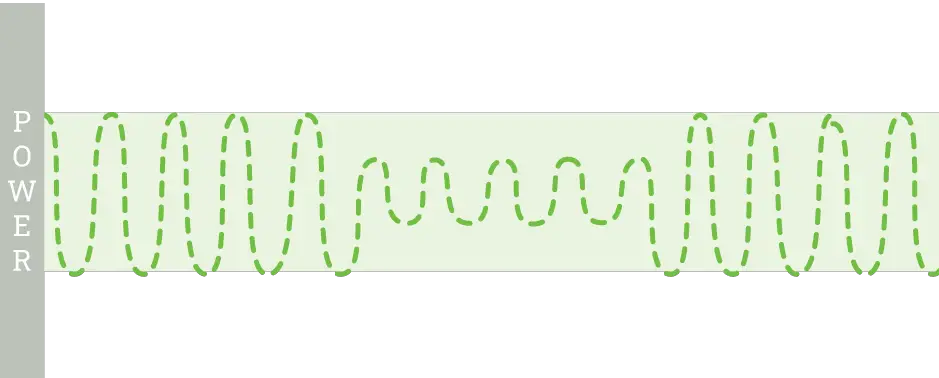
You can think of power sags as the opposite of power surges. A power sag is a short-duration undersupply of voltage that decreases the voltage significantly below the standard level.
Power sags can happen on the side of the power provider or on the side of the end-user. It can happen when industrial equipment draw a lot of power during start up or when household appliances (like refrigerators and aircons) are turned on. This problem is usually exacerbated by faulty wiring on the user side.
Meanwhile, low voltage is basically a longer-duration power sag. Instead of occurring in a duration of nanoseconds, low voltage events lasts for minutes up to days. These events happen because the power provider’s supply cannot meet the demand of the consumers. This is most common in rural areas, or where the infrastructure for electricity is not yet fully-developed.
Note: in other countries, low voltage fluctuations are usually known as “brownouts”. However, in the Philippines, brownouts and blackouts/power outages have the same meaning.
How power sags and low voltage can damage an appliance
Surely a deficit in voltage is far safer than an excess in voltage, right? Not really.
Appliances that have motors or compressors need to maintain a level of torque to work. A higher voltage will increase the torque, while a reduced voltage will also reduce the torque of a motor.
If the torque decreases to a certain level, it will stall the motor. What’s worse is the appliance is still turned on, hence the motor will not move, but heat will still be produced.
If this heat continues to build up, it can melt the insulation wires and other parts of your appliance, making them less efficient in the long run. It can also totally destroy your hard-earned investment if you do not invest in a power protection device.
Power outage
A power outage (otherwise known as blackout or brownout) is a loss of electric power in a given area that can last for minutes or for days.
Power outages are quite common in the Philippines, and they are usually caused when the demand for electricity exceeds the available or supply, or when the power lines are downed by a storm.
How a power outage can damage an appliance
Of course, all appliances will stop working during a power outage. However, the damage to the appliance doesn’t occur when the power goes out, but when the power goes back on line.
There are three scenarios that can happen when the power goes back up: (1) the voltage returns in normal levels, or the voltage is either (2) too high or (3) too low.
When the voltage comes back with a high level of voltage, it will cause a power surge that will ravage through your appliance. When it’s too low, a voltage sag will occur which can damage appliances with motors or compressors like air conditioners and refrigerators.
What appliances need power protection?
Equipping ALL of your appliances with power protection devices may seem prudent but that wouldn’t be cost-efficient.
The appliances that need power protection devices the most are those that have high-tech electronics (like microprocessors, inverters, touch display screen, etc.) and those that have compressors (aircons and refrigerators). Appliances with simpler electronics can get away with not having a power protection device.
Nice to have
- Air conditioners
- Refrigerators
- High-end washing machines
- TVs
Not required
- Electric fans
- Kitchen appliances
- Radios
- Telephones
Note: as a rule-of-thumb, the more expensive your appliance is, the more that it will make sense to provide a power protection device for it.
Types of power protection devices for home appliances
Depending on the area that you live in or the appliance that you want to protect, there are several power protection devices that are available in the market. Each type differs in price points and in the level of protection.
Power on delay
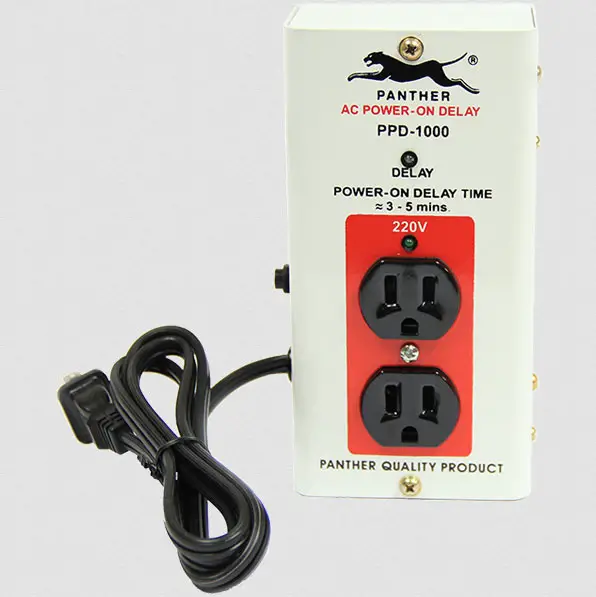
As the name suggest, the power on delay will delay the incoming electrical current for 3-5 minutes after a power outage to ensure that the power stabilizes. This protects your appliance from the expected voltage surge after the power outage.
A power-on-delay offers the least protection out of all of these, as it does not do anything to protect the unit DURING the fluctuation/outage; it only kicks in AFTER the event has happened.
However, this is especially helpful for appliances that use compressors (like aircons and refrigerators) since the refrigerant gases need to stabilize after the compressor stops, before the equipment can be safely turned on again.
Use for: refrigerators, freezers, and aircons
Surge Protector
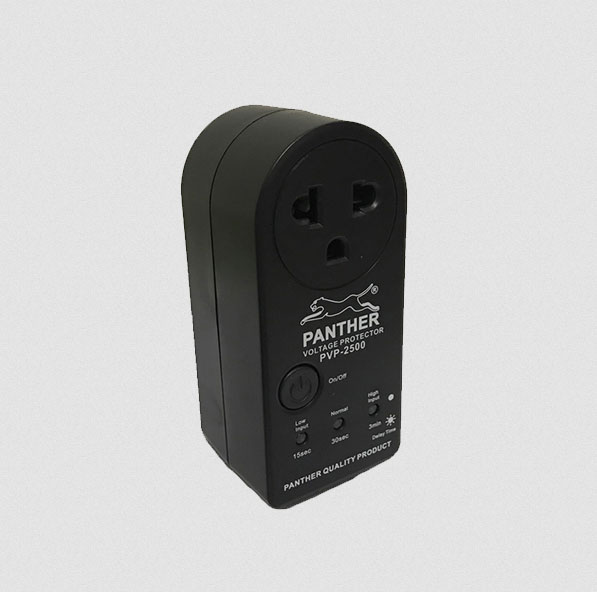
Surge protectors work by shutting off the power supply to your appliance when it detects unusually high voltage fluctuations. This saves your appliance from the brunt of the power surge.
This power protection device is a must if you live in an area with nearby malls or factories. However, this protection may not be enough if you live in an area with regular power fluctuations.
Note: some surge protector models have a built-in power-on-delay function. Hit two birds with one stone!
Use for: refrigerators, freezers, aircons, televisions
Automatic Voltage Regulator (AVR)
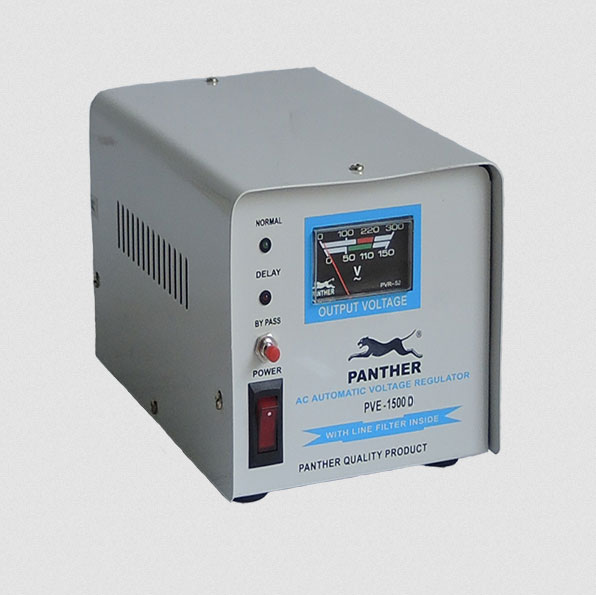
An automatic voltage regulator (AVR) is a power protection device that maintains the voltage at the desired level supplied to your equipment, by regulating any voltage fluctuations (both over and low voltage) that might occur.
This device offers the most protection for your appliance. Some models even come with a built-in surge protector and power-on-delay functions. They are quite pricey though!
How to protect your appliances from power disturbances without using power protection devices
Taking the right precautions can save your appliance from damage from power disturbances. Do these tips when you’re not going to equip your appliance with a power protection device.
Properly ground your appliances
Earth-grounding provides a means to dissipate excess currents or voltage surges.
In plugs of several appliances, there are three prongs instead of just two. The third pin is known as the grounding pin. Do not remove this as this is for your own safety; in case of a malfunction in the electronics or during power surges, the grounding pin delivers the excess electricity to the ground – rendering it harmless.
Note: some refrigerators have two-prongs instead of three. What they use for grounding is a thin green wire at the back of the refrigerator. This should be connected to a grounding rod outside of your home (or do the good old “ibalot ang wire sa pako at ibaon sa lupa” method).
Unplug devices during a thunderstorm
One of the simplest ways to protect your appliance from an oncoming thunderstorm and the power surge that comes along with it is to unplug them while it happens.
Of course, some appliances – due to want or need – can’t be unplugged. Refrigerators need to be plugged in as they need to keep your food fresh, and no one likes to unplug their TVs and computers during a thunderstorm and just sit in boredom. Which is why those appliances are recommended to be equipped with power protection devices.
Wait for a few minutes before plugging in appliances after a power outage
When the power comes back on after a power outage, it may suffer from either under or overvoltage, which is why it is wise to wait for a few minutes for the power to stabilize first before plugging your appliances back in. Also, you may also cause the power surge yourself, when the heavy power using appliances like refrigerators and aircons come back on.
Inspect your wiring
Regularly inspect your house wiring and your appliance’s wiring as damaged or exposed wires disrupt the flow of electrical current which increases the chance of having a power surge.
Some signs that your wiring is damaged are burn marks or burning smells coming from outlets, buzzing sounds, and frequent tripping of breakers.
Conclusion
Power protection devices are a must if you want to protect your hard-earned investment on appliances from turning into metallic junk.
You can choose on several options of these devices depending on your situation and the level of protection you want to provide your appliances. We will get to them in a separate post.
Sources:
- https://www.ecmweb.com/content/article/20894433/how-to-save-your-motors-during-a-brownout
- https://panther.ph/six-common-power-problems-in-the-philippines/

Miguel Mores worked for 5 years as a member of the product management team for a home appliance company in the Philippines. He started 101appliance to answer the most common customer questions that he has encountered during his time in the industry. He now works in the digital marketing field and manages a small online bookstore on the side.

